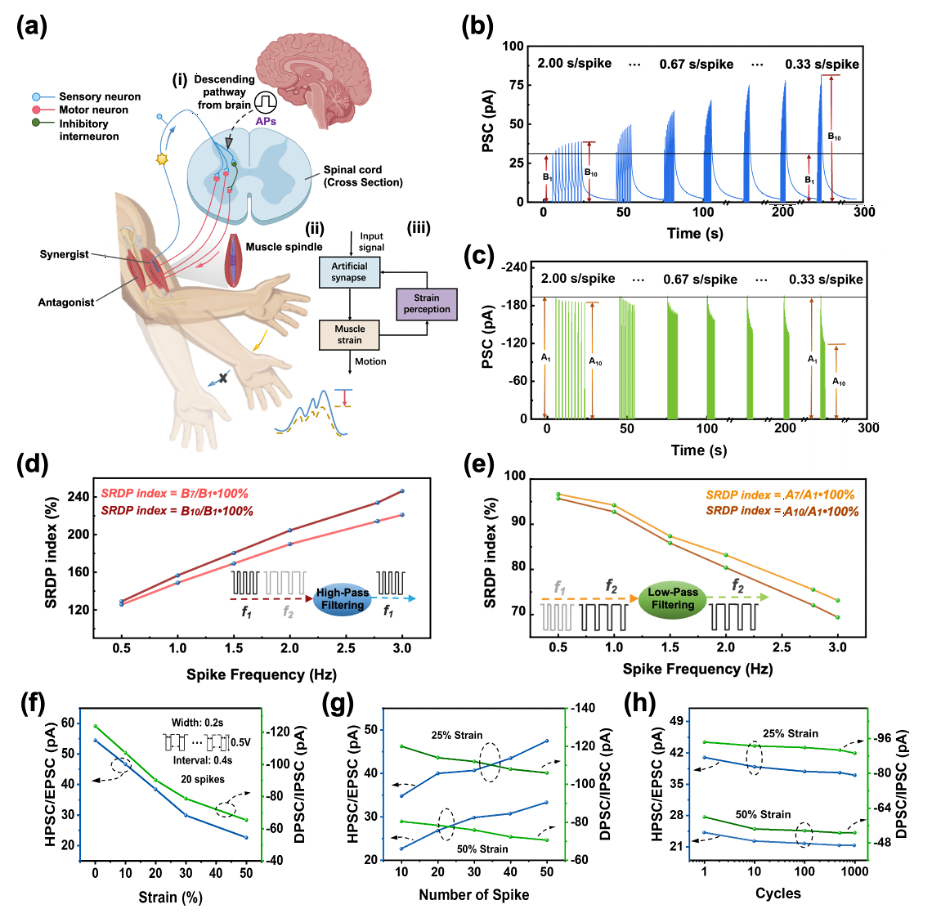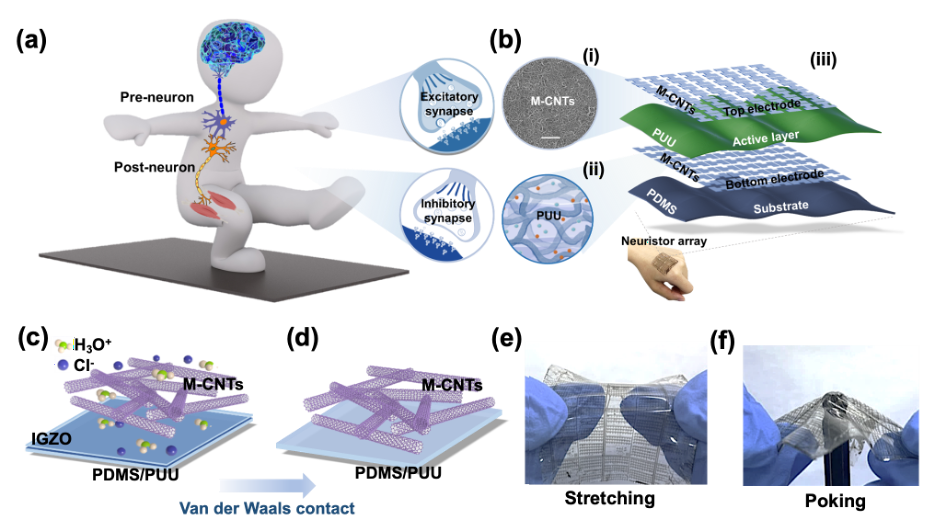Recently, Prof. Zhang Min and Qiu Rui published their research results entitled ” Bilingual Bidirectional Stretchable Self-healing Neuristors with Proprioception ” on ACS Nano (the Nature-index Journal with IF =18.027) as the corresponding author and the first author respectively.
The coexistence and interaction of excitatory and inhibitory neurotransmitters at biological synapses enable bilingual communication, serving as a physiological foundation for organism adaptation, internal stability, and regulation of behavior and emotions in mammals. Neuromorphic electronics are expected to emulate the bilingual functions of the biological nervous system for artificial neurorobotics and neurorehabilitation. In this paper, we propose and implement a bilingual bidirectional artificial neuristor array, which utilizes ion migration and electrostatic coupling properties between intrinsically stretchable and self-healing poly(urea-urethane) elastomer and carbon nanotube electrodes, realized by van der Waals integration. The neuristor exhibits depression or potentiation behaviors in response to the same stimulus in different operational phases and achieves a four-quadrant information-processing capability. These properties make it possible to simulate complex neuromorphic processes, which involve bilingual bidirectional responses, such as withdrawal or addiction responses, and array-based automated refresh.
Furthermore, the neuristor array is a self-healing neuromorphic electronic device that can function effectively even under 50% mechanical strain and can recover operation voluntarily within 2 h after experiencing mechanical injury. Additionally, the bilingual bidirectional stretchable self-healing neuristor can emulate coordinated neural signal transmission from the motor cortex to muscles and integrate proprioception through strain modulation, similar to the biological muscle spindle. The properties, structure, operation mechanisms, and neurologically integrated functions of the proposed neuristor signify an advancement in neuromorphic electronics for next-generation neurorehabilitation and neurorobotics.
The article links:
Bilingual Bidirectional Stretchable Self-Healing Neuristors with Proprioception

